Struggling to find the best spots for street food in Bangkok? It can be quite frustrating when hidden gems seem exclusive to locals. After thorough research and countless tastings, a guide has been crafted to uncover these culinary treasures.
Ready to savour your way through Bangkok’s delightful streets?
Key Takeaways
- Old Town and Chinatown in Bangkok are top spots for street food. They offer tasty dishes like Pad Thai, crab omelette, and mango sticky rice.
- Always check the hygiene of stalls before eating. Look for clean utensils and cooking areas. Hot food is safer to eat than raw or undercooked items.
- November to February is the best time to visit Bangkok. The weather is cooler and perfect for exploring street food markets without worrying about heat.
- Must-try dishes include Tom Yum Goong (spicy shrimp soup), Kai Jiao Pu (crab omelette), Pad Thai, and Thai Boat Noodles.
- Carry small change and use hand gestures if unsure of dish names. This helps with easy transactions and better communication with vendors.
Best Neighborhoods for Street Food
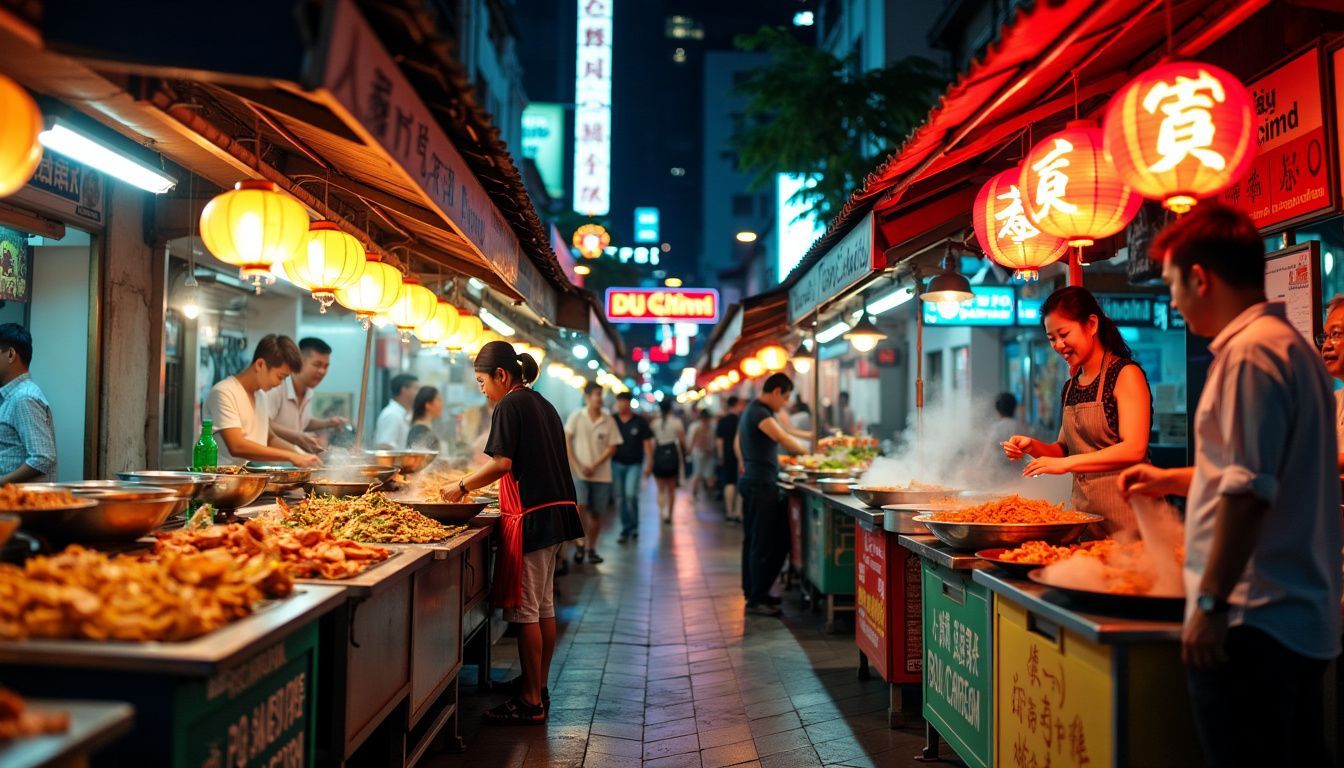
Bangkok is a paradise for street food lovers. Each neighbourhood offers unique flavours and experiences… you won’t want to miss!
Old Town
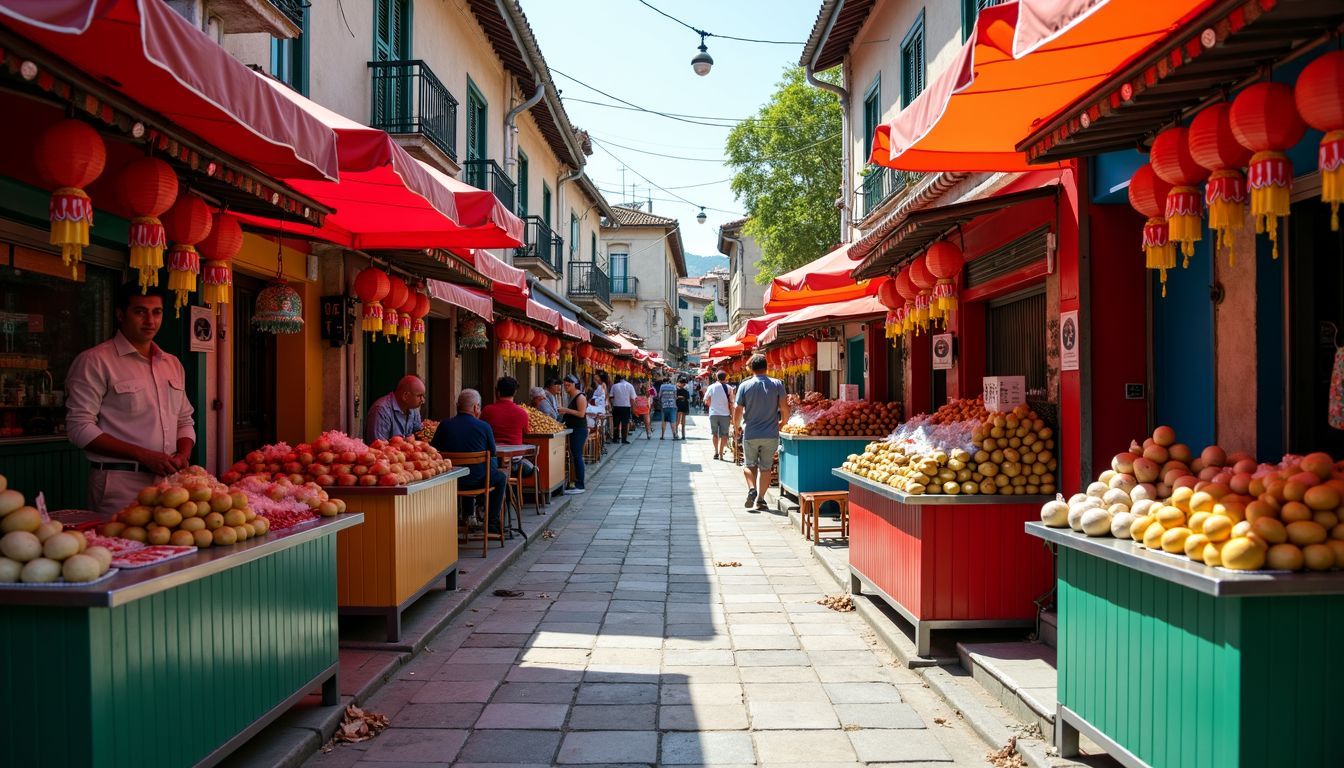
Old Town is a vibrant area with bustling streets and amazing food. I found many hidden gems while wandering around. Street vendors here offer dishes like Pad Thai, Kai Jiao Pu (crab omelette), and Kwei Tiao Rhea (Thai boat noodles).
The flavours are rich and authentic.
Supporting local businesses promotes sustainable tourism. Vendors often chat with you as they cook, giving a personal touch to your meal. It’s not just about the food; it’s about the whole experience—meeting locals and learning their stories adds so much value.
Old Town’s street food scene blends taste with tradition perfectly.
Chinatown
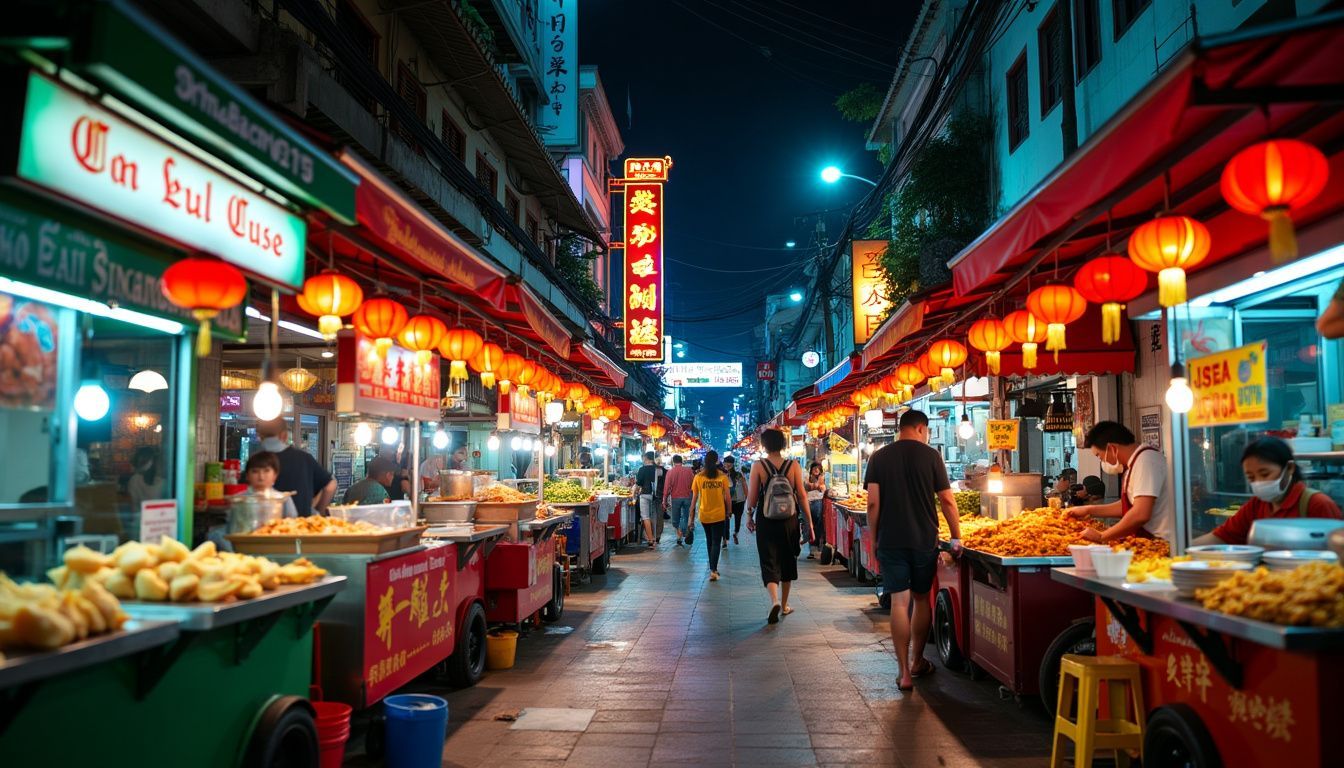
Chinatown in Bangkok is a true gem for street food lovers. Evenings here turn into a festival of flavours. Food stalls line up, offering tasty treats like wontons and mango sticky rice.
I found the crispy pork belly irresistible—its crunch followed by juicy meat.
Local businesses thrive in Chinatown. Supporting them means enjoying fresh ingredients and authentic taste. Walking through Yaowarat Road, vendors chat warmly with customers, making it feel like home.
Sustainable tourism practices are also promoted here, so you get to eat well while doing good for the community too!
Samyan
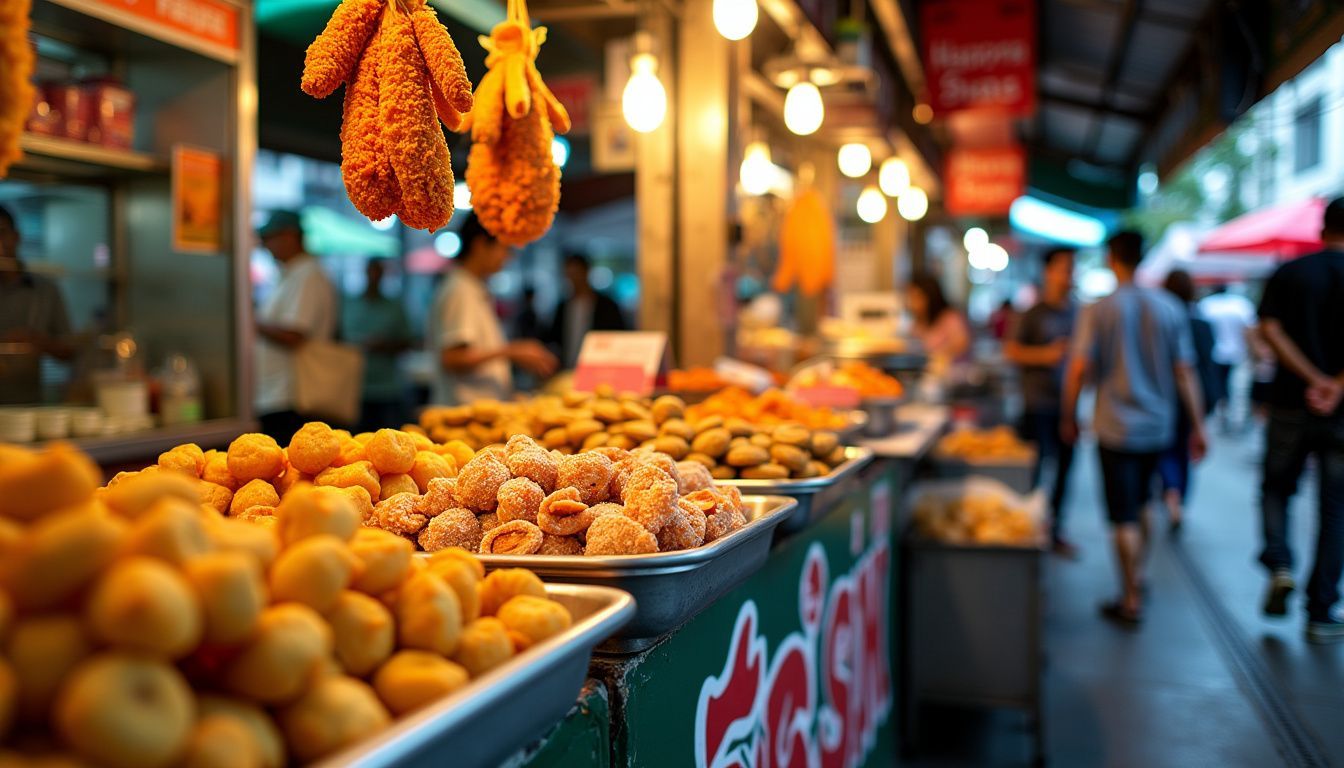
Moving from Chinatown to Samyan, you’re in for a treat. Samyan is a true gem in Bangkok’s street food scene. The area buzzes with energy, offering tasty dishes at every corner. I always find something new here.
One of my favourite spots is Jay Fai’s famous stall. Her crab omelette is out of this world! Along with the savoury delights, many vendors also sell sweet treats like banana fritters and Thai desserts made from coconut milk.
You can easily spend hours eating your way through Samyan’s bustling streets.
Phahurat (Little India)
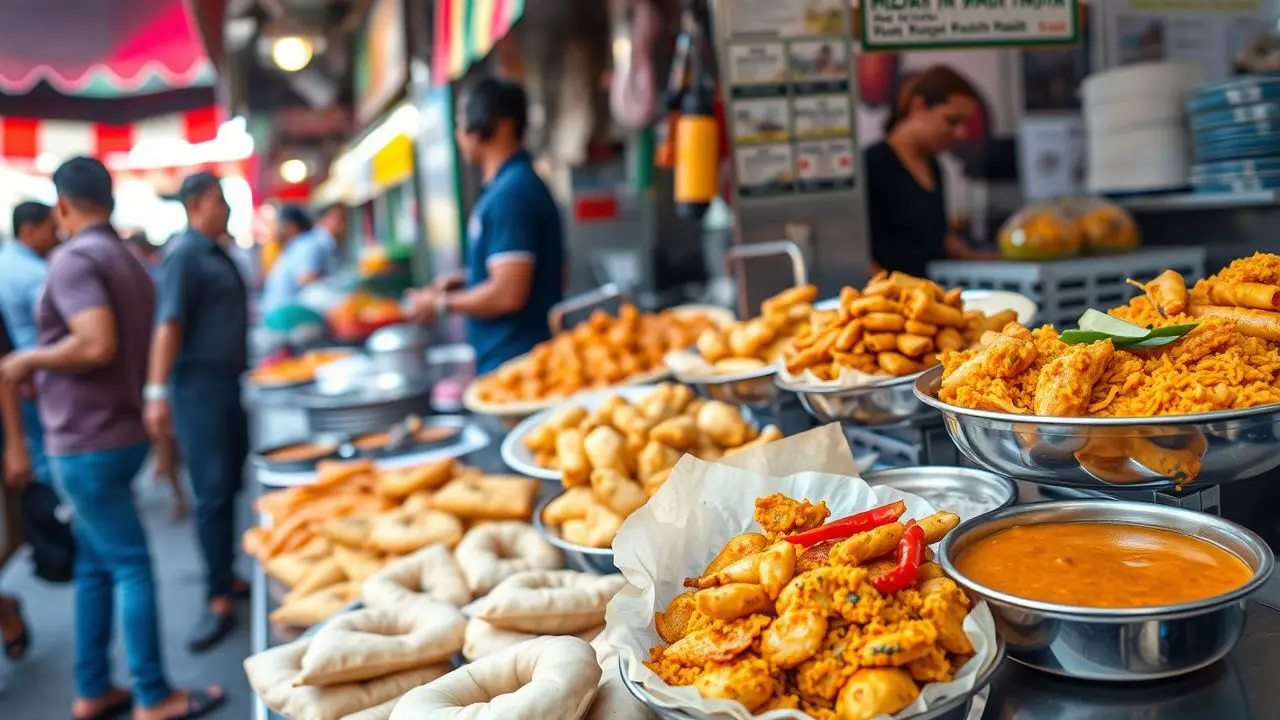
Phahurat, also called Little India, bustles with life and flavours. The area is perfect for street food fans wanting a taste of Indian cuisine in Bangkok. Stalls offer dishes like samosas, biryanis, and tasty curries.
I love how the community supports local businesses here. Vendors smile warmly as they serve up delicious bites. Every corner offers something tempting to try!
The best way to experience Phahurat is through its street food – each bite tells a story.
Damnoen Saduak Floating Market
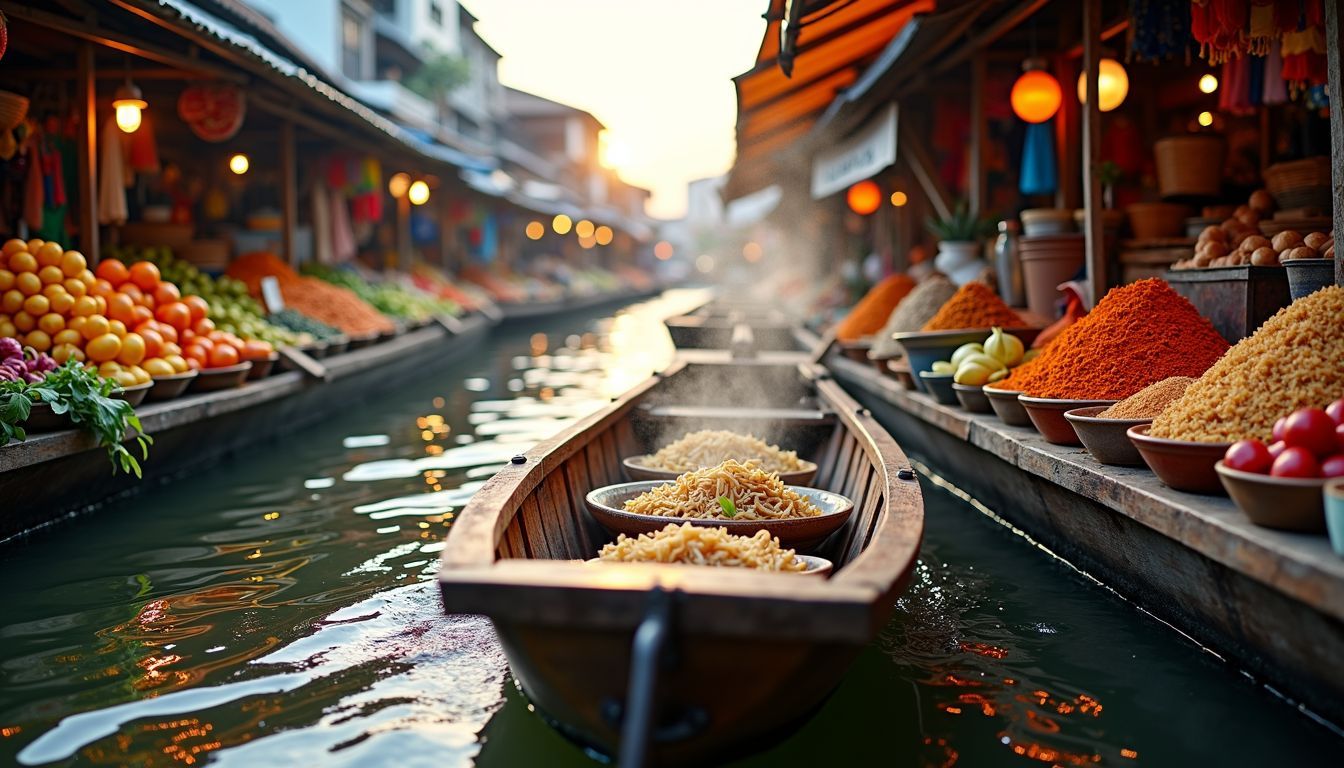
Damnoen Saduak Floating Market bursts with life and flavour. Vendors sell food from boats, creating a lively scene. You can explore the market by boat too. I love trying pad thai, mango sticky rice, and coconut ice cream here.
The smells are amazing!
Located in Ratchaburi province, this market offers a peek into Thai culture and culinary traditions. It attracts many tourists eager to sample traditional Thai dishes. The vibrant atmosphere makes it a must-visit for authentic experiences.
Must-Try Dishes
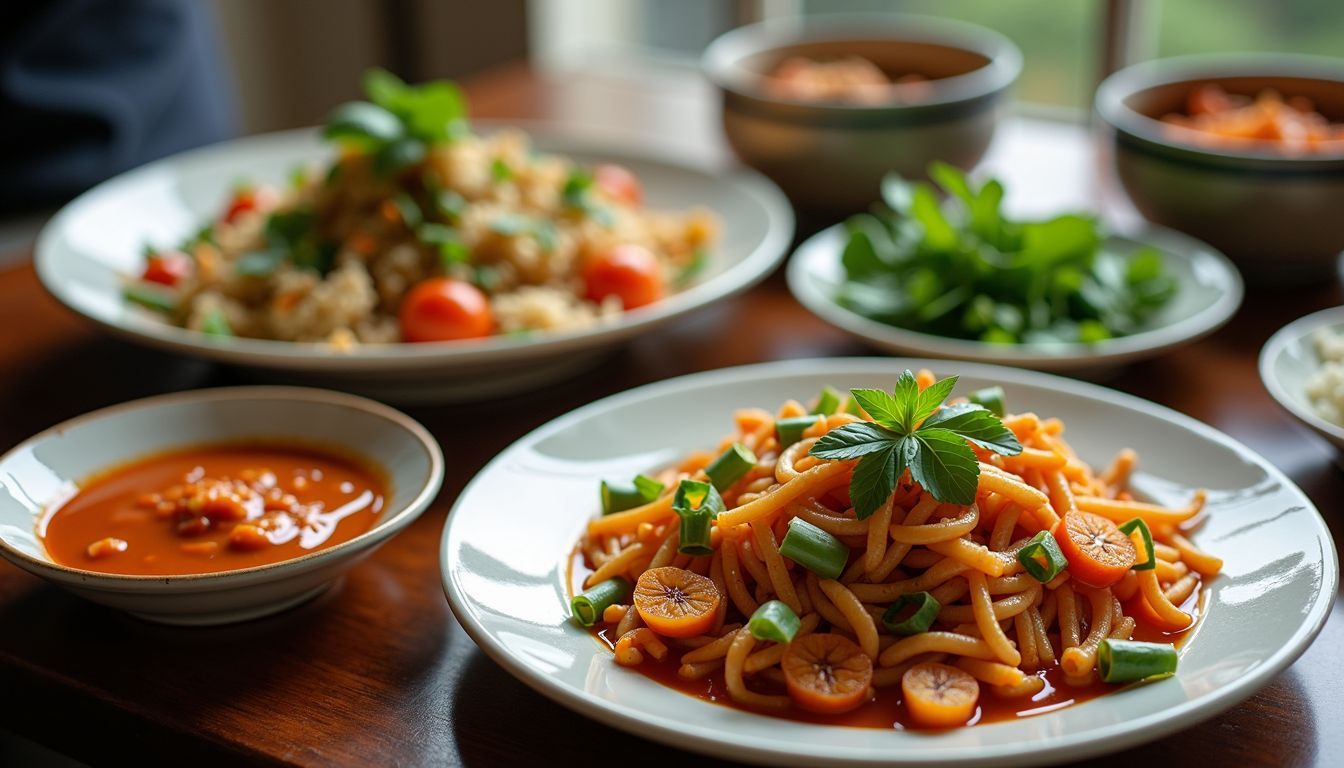
Bangkok offers mouth-watering dishes you must try. Each bite tells a story of Thai culture and flavour.
Tom Yum Goong (Spicy Shrimp Soup)
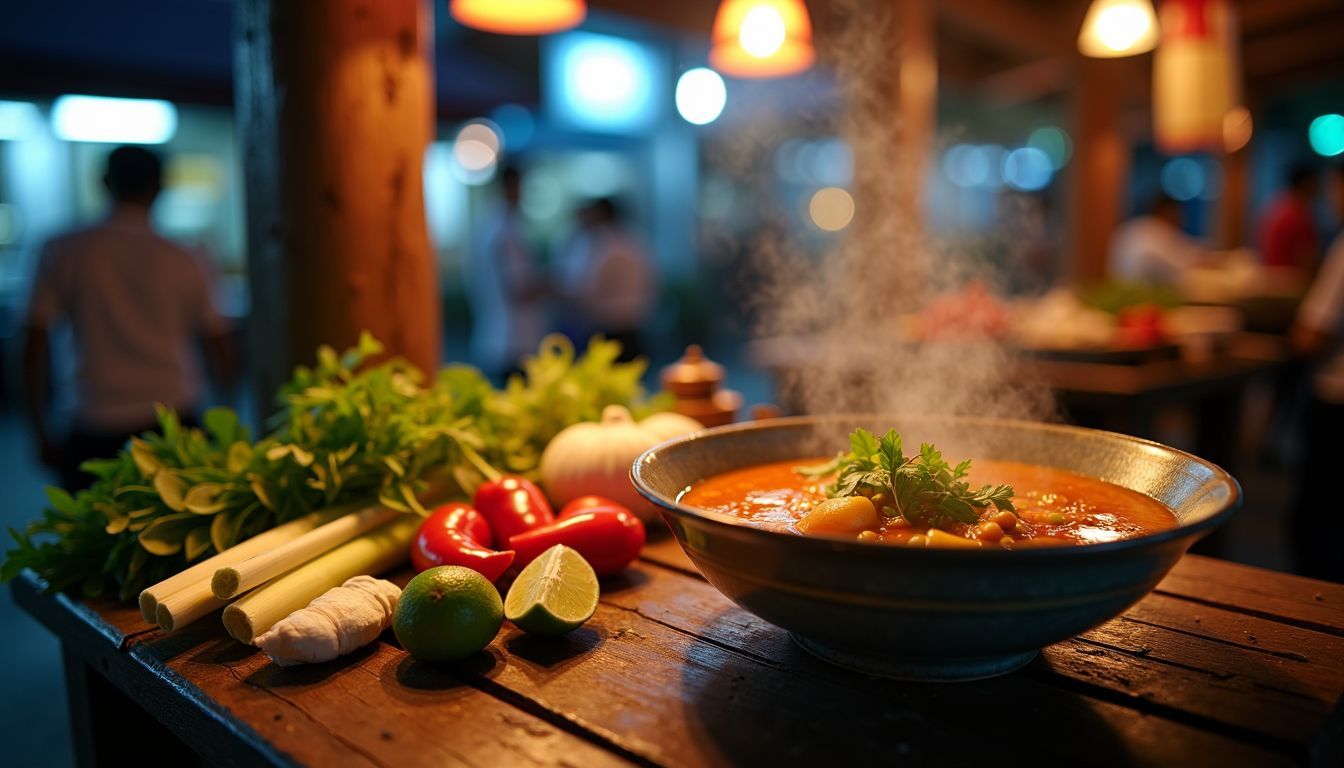
Tom Yum Goong is a spicy shrimp soup you must try. This Thai dish bursts with flavours from fresh herbs and spices. The soup has shrimp, lemongrass, lime leaves, galangal, chillies and fish sauce.
Each bite gives a mix of sour, spicy and savoury tastes.
You can find this popular dish all over Bangkok’s street food stalls. It showcases the bold flavours of Thai cuisine. Eating Tom Yum Goong on the streets adds to your adventure in Bangkok.
Enjoying it helps you feel connected to the local culture and its culinary traditions.
Kai Jiao Pu (Crab Omelette)
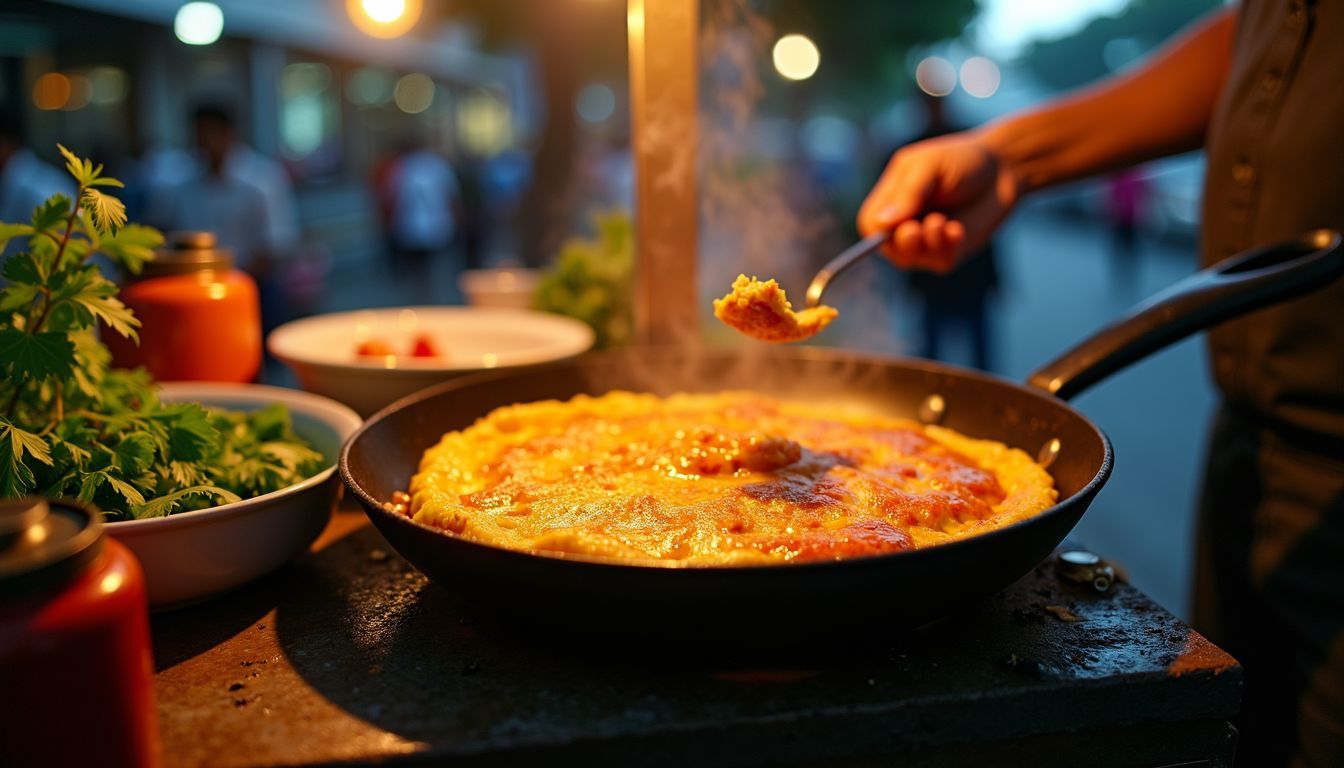
Tom Yum Goong leaves your mouth tingling… but nothing beats the rich taste of Kai Jiao Pu. This crab omelette is a hidden gem in Bangkok. Locals and tourists love it.
The omelette is fluffy and stuffed with fresh crab meat. It’s a must-try for food lovers who want to savour true Thai flavours. Eating this dish helps support local businesses too, which means you’re enjoying good food while supporting the community.
Kai Jiao Pu will make you fall in love with Bangkok’s street food scene.
Pad Thai
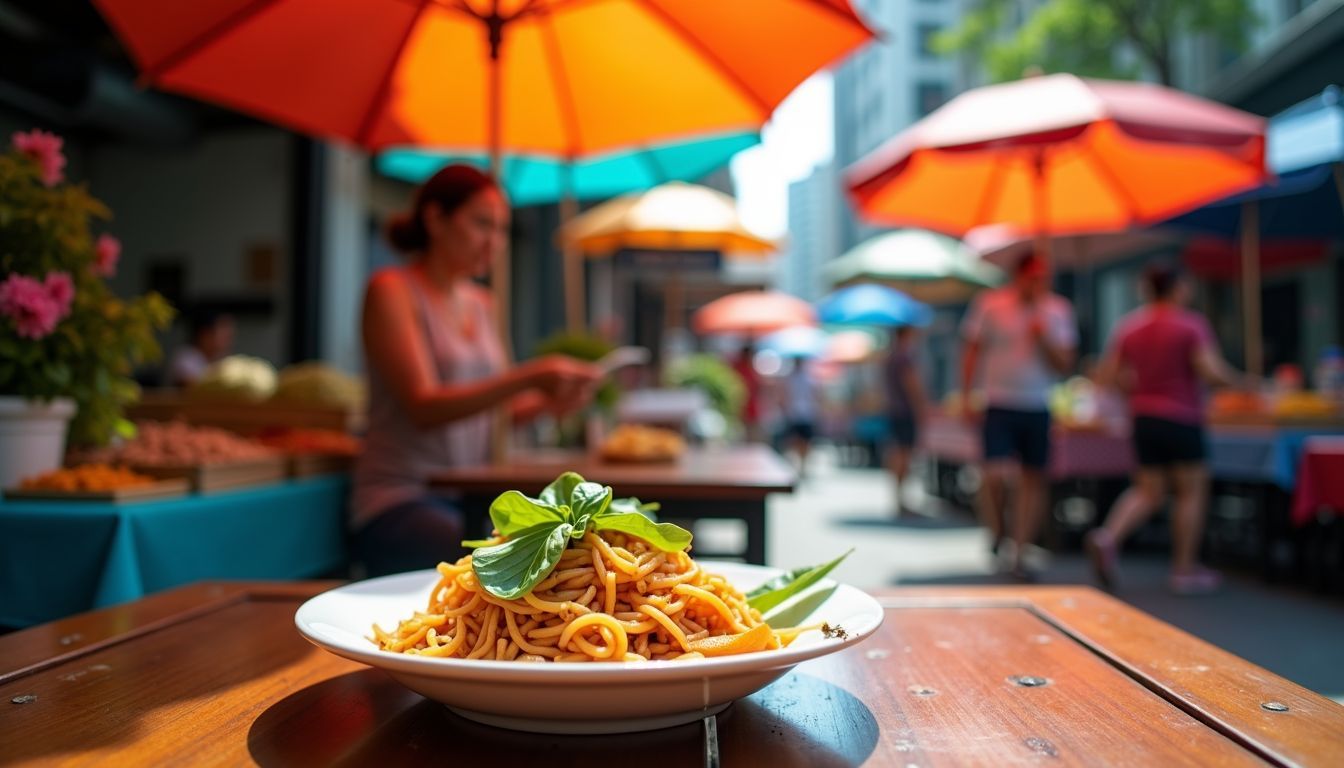
One of the best dishes to try in Bangkok is Pad Thai. This stir-fried noodle dish has prawns, tofu, and eggs. It comes with a squeeze of lime and some peanuts on top. You can find this delicious meal at many street stalls across the city.
I recommend eating Pad Thai at Thip Samai, one of the oldest places for this dish in Bangkok. The flavours are rich and fresh. Eating Pad Thai here gives you a sense of Bangkok’s food culture.
Make sure to add chilli flakes if you like your food spicy!
Pad Krapao Moo (Stir-fried Pork with Holy Basil)
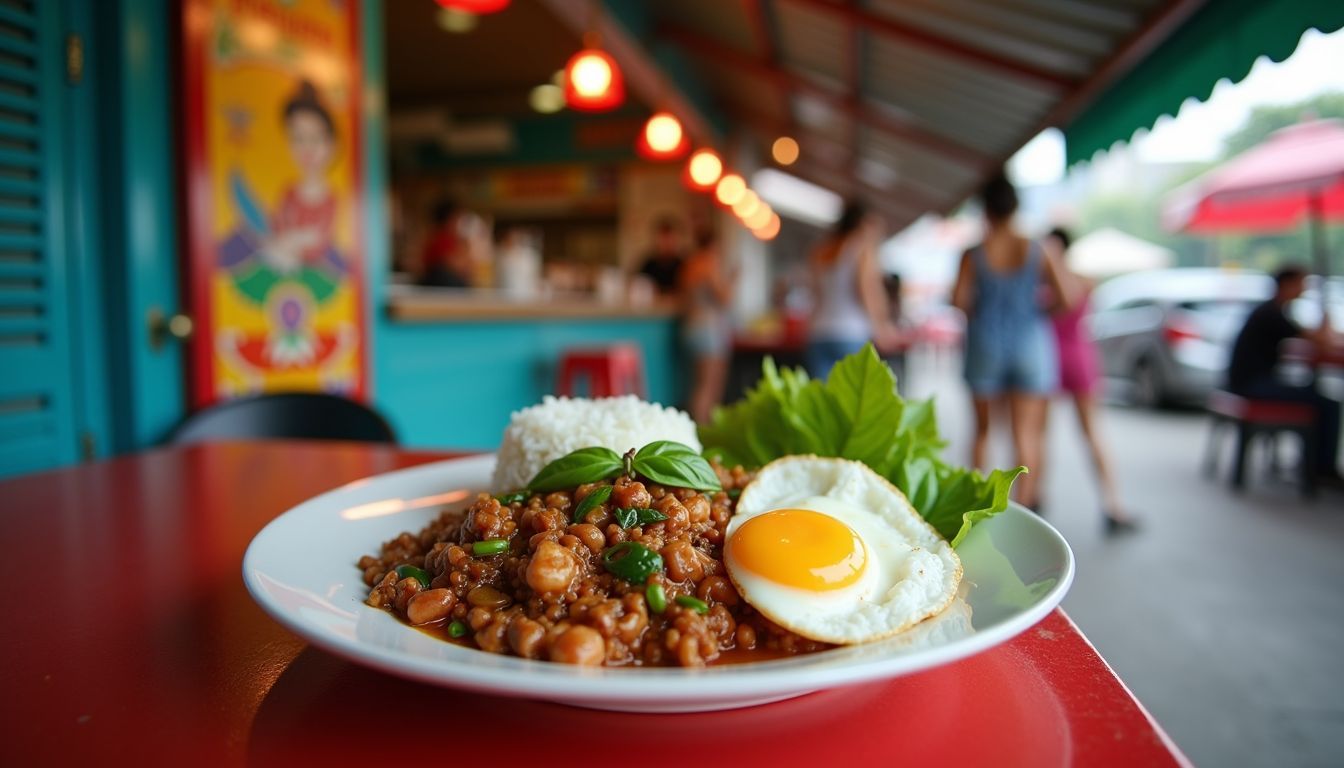
Pad Krapao Moo is a must-try dish in Bangkok. It’s made with minced pork, holy basil, garlic, and chilli. The smell alone will make your mouth water. Street food vendors across the city sell it to locals and tourists.
I love how each bite bursts with flavour—savory, spicy, and aromatic. It’s often served over rice and topped with a fried egg. This dish offers an authentic taste of Thai cuisine that you won’t forget quickly!
Next up on our adventure is another classic: Kwei Tiao Rhea (Thai Boat Noodles).
Kwei Tiao Rhea (Thai Boat Noodles)
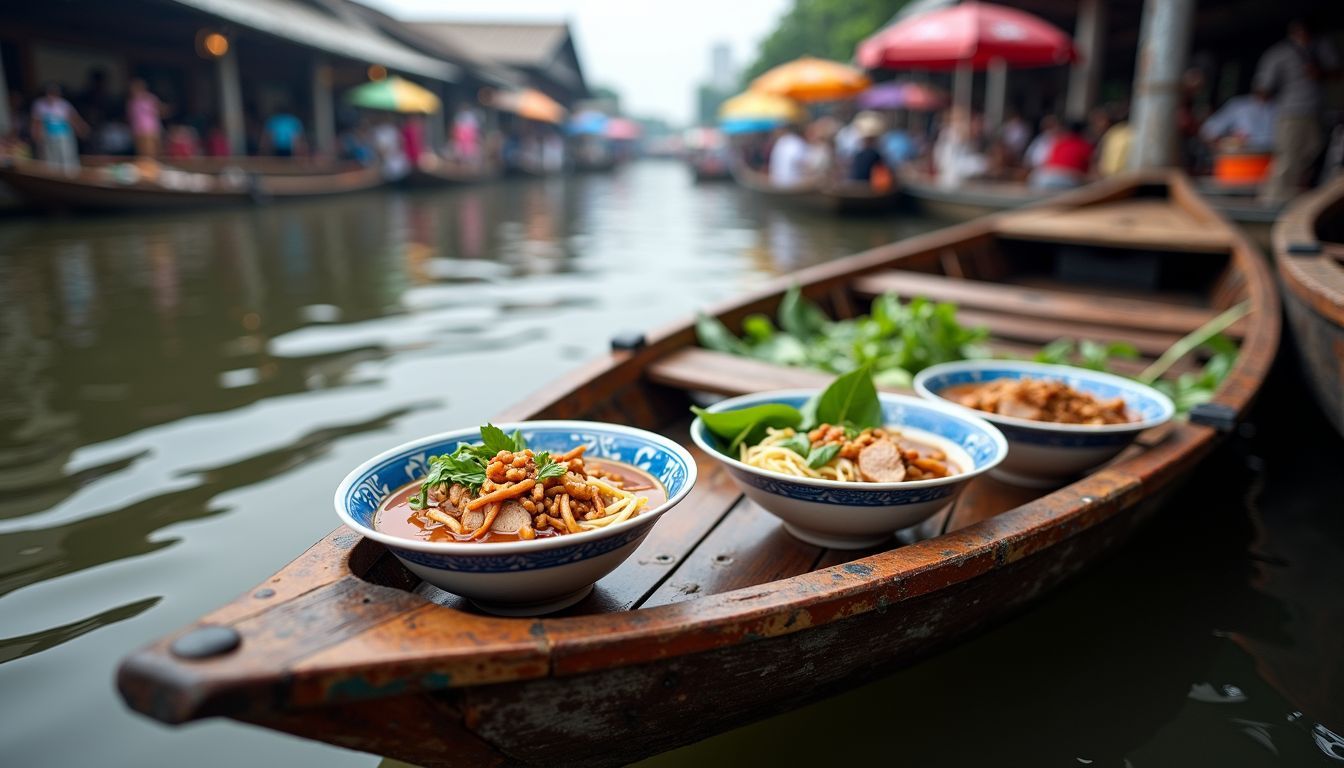
Kwei Tiao Rhea, or Thai Boat Noodles, are a must-try in Bangkok. These noodles have a rich taste. Vendors often sell them near the Chao Phraya River. The broth is dark and slightly salty, thanks to pork blood and soy sauce.
I first tried these noodles at Damnoen Saduak Floating Market. I watched as they cooked them right on their boats! They served my bowl with thin rice noodles, tender meat slices, and a generous splash of broth.
Each spoonful was heavenly—truly an authentic thai culinary experience!
Tips for Street Food Lovers
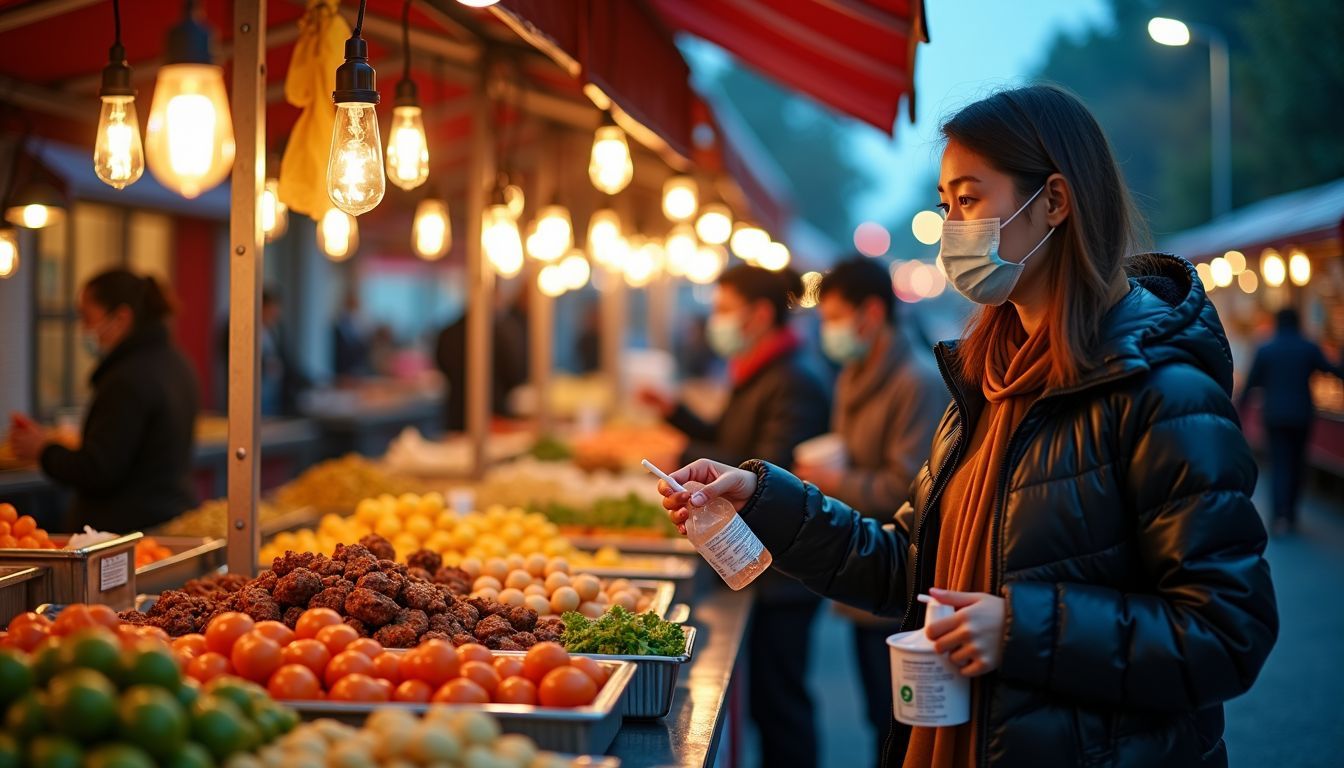
Plan your food trip during cooler hours for a more pleasant experience. Always check the hygiene of stalls before eating, and bring hand sanitiser.
Best times to visit
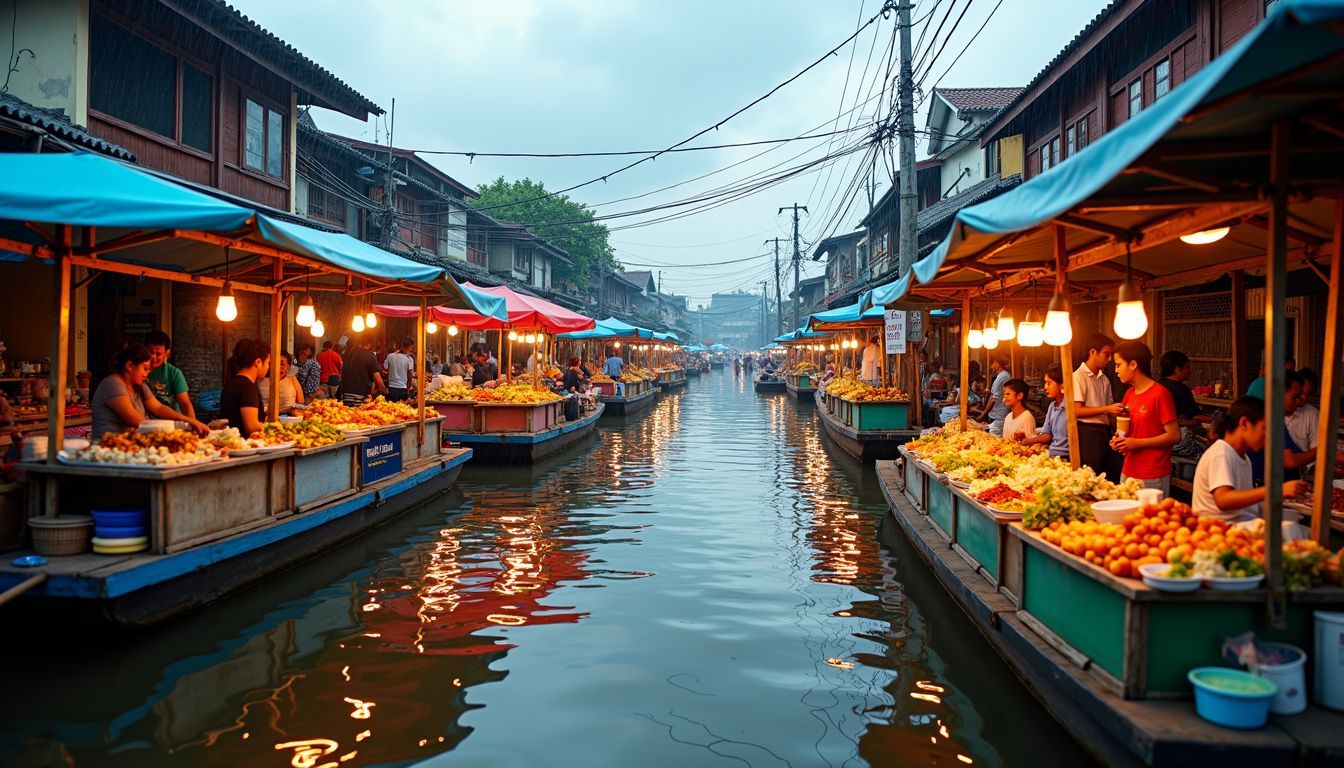
The cooler months, from November to February, are the best times to visit Bangkok. The weather is pleasant and perfect for enjoying street food adventures. I think it’s a great time to explore Old Town or Chinatown without worrying about the heat.
May to October is Bangkok’s rainy season. Street food stalls still operate but expect fewer crowds and unique flavours during this period. Floating markets like Damnoen Saduak offer fresh experiences even in the rain.
Navigating food stalls
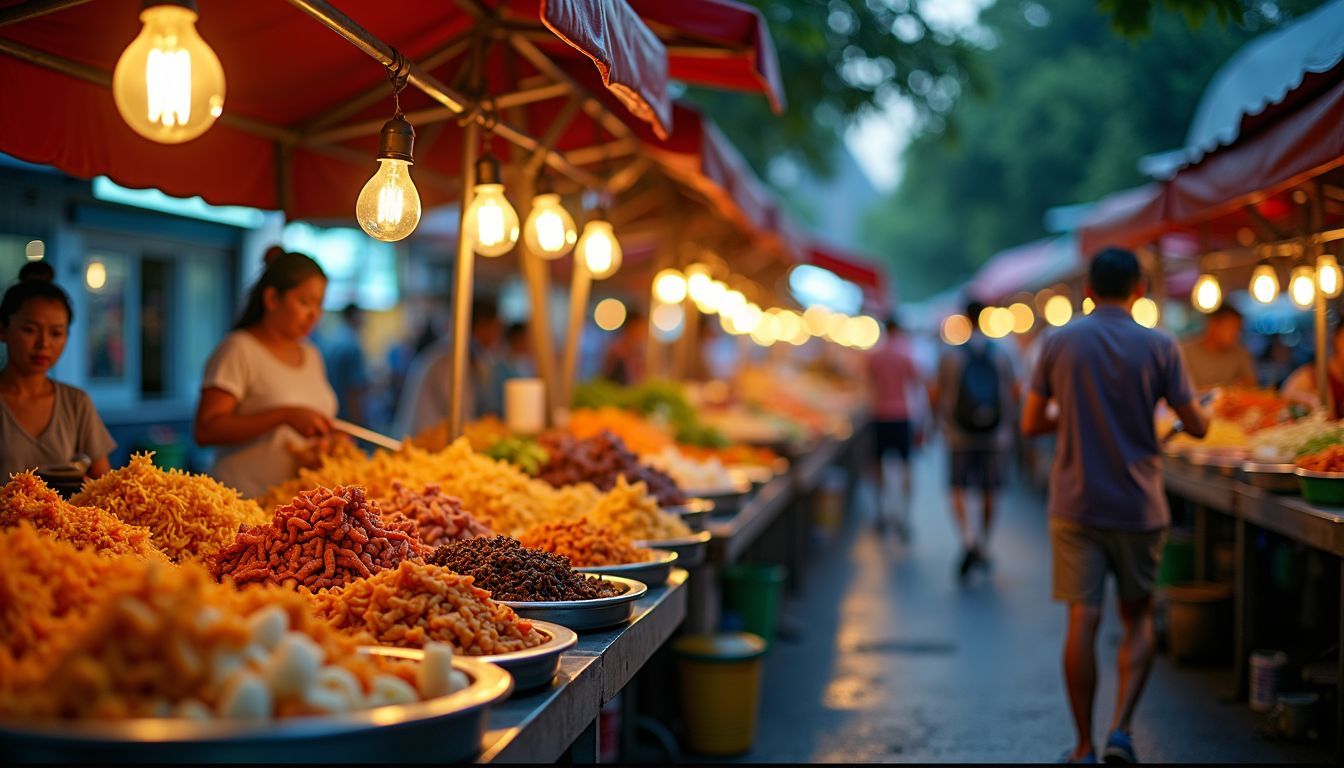
Food stalls are bustling. It is easy to feel overwhelmed. I use a few tricks to make it simple. First, I go early or late to avoid the crowd. Many stalls open from morning till night.
I carry small change and local currency. Vendors appreciate quick transactions. I point at dishes if unsure of names—hand gestures help too! Trying different foods is best, but start with well-known dishes like Pad Thai to ease into new flavours.
Safety matters for me as a street food lover! Stalls with many customers are likely safe; high turnover means fresh food.
Lastly, trust my senses—if something does not smell right, skip it. Enjoying Bangkok’s street food adventure can be safe and fun by following these tips.
Safety tips for street food consumption
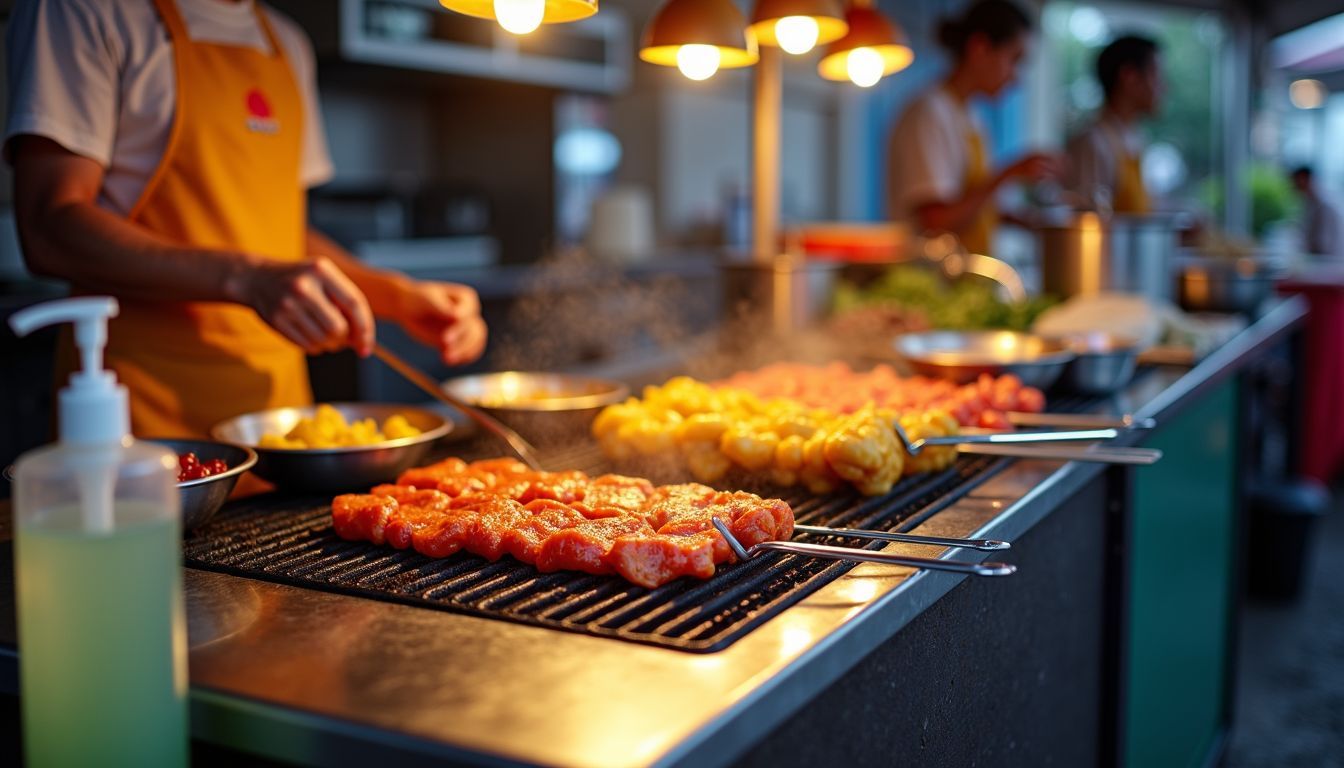
Before diving in, let’s talk about safety while eating street food. First, check the stall’s cleanliness. Look for clean utensils and cooking areas. If locals are queuing up, that’s a good sign.
Also, always watch your food being cooked fresh. Hot food is less likely to make you sick. Avoid raw or undercooked dishes unless you can trust the source fully. Lastly, bring hand sanitiser and use it before eating—staying safe means more time enjoying!
Conclusion
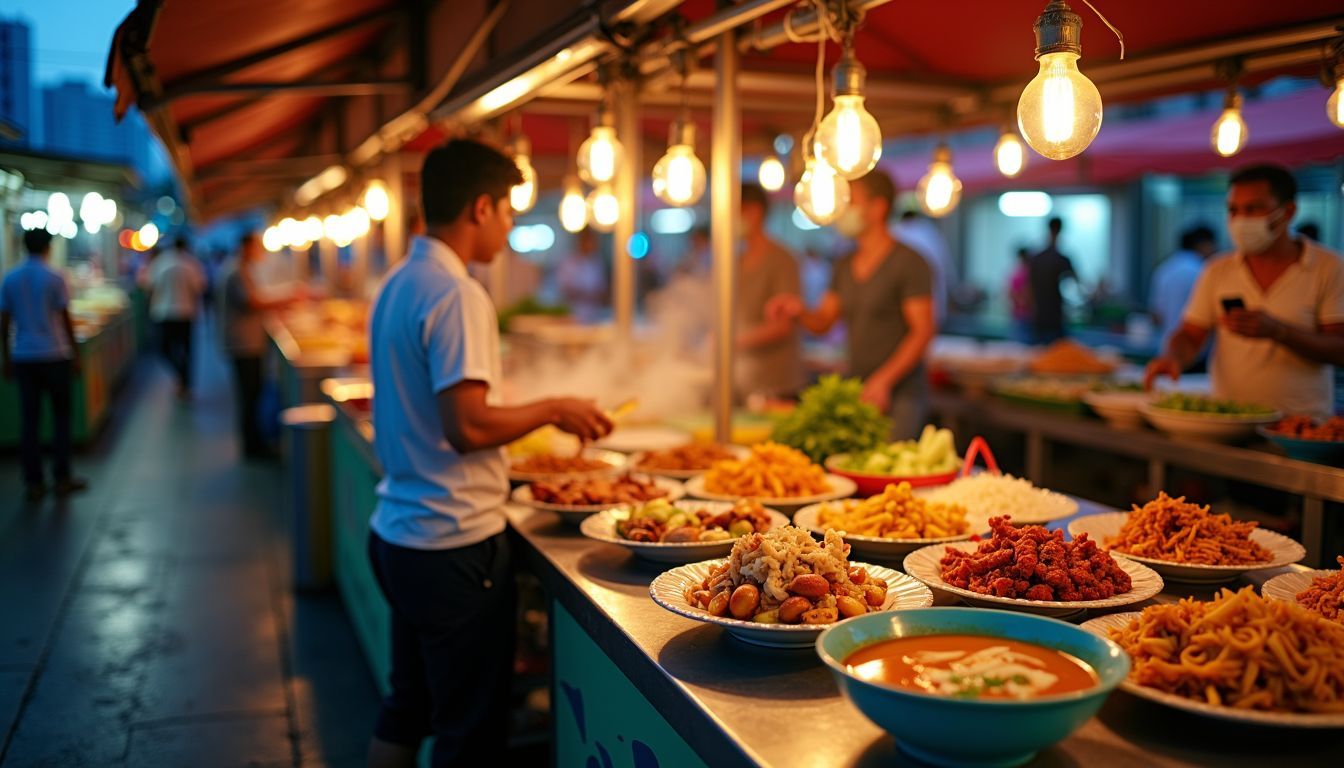
Exploring Bangkok’s street food is a real treat. Each dish tells its own story. The city’s markets and stalls are alive with flavours and aromas. Take your time to savour every bite, from spicy shrimp soup to tasty pad Thai.
Let every meal be an adventure!
FAQs
1. What are some must-try dishes in Bangkok street food?
You should try papaya salad, spring rolls, fried rice, and barbecued pork. Thai-Chinese cuisine offers unique dishes like khanom chin and nam ngiao.
2. Where can I find the best street food in Bangkok?
Visit places like Pak Klong Talad for fresh produce and Wat Pho near the Reclining Buddha for tasty snacks. For a mix of flavours, explore the Half-Day Railway Market and Floating Market Tour.
3. Are there any famous chefs known for their street food?
Yes, Supinya Junsuta is well-known for her delicious creations which even earned a Bib Gourmand award.
4. Can you recommend any tours that include both cultural sites and street food?
The Half-Day Railway Market and Floating Market Tour is perfect—it combines visits to markets with tasting local treats while exploring famous landmarks like Wat Arun (Temple of Dawn) and Phra Kaew (Temple of the Emerald Buddha).
5. How does Thai-Chinese cuisine differ from traditional Thai food?
Thai-Chinese cuisine includes influences such as curry paste used in new ways or fusion dishes like Chinese-influenced fried eggs mixed with classic Thai ingredients.
6. What other attractions can I visit while enjoying Bangkok’s street food scene?
Don’t miss iconic spots like the Grand Palace, Golden Mount, Temple of Dawn (Wat Arun), Temple of the Emerald Buddha (Phra Kaew), Reclining Buddha at Wat Pho—each offering not just history but nearby culinary delights too!